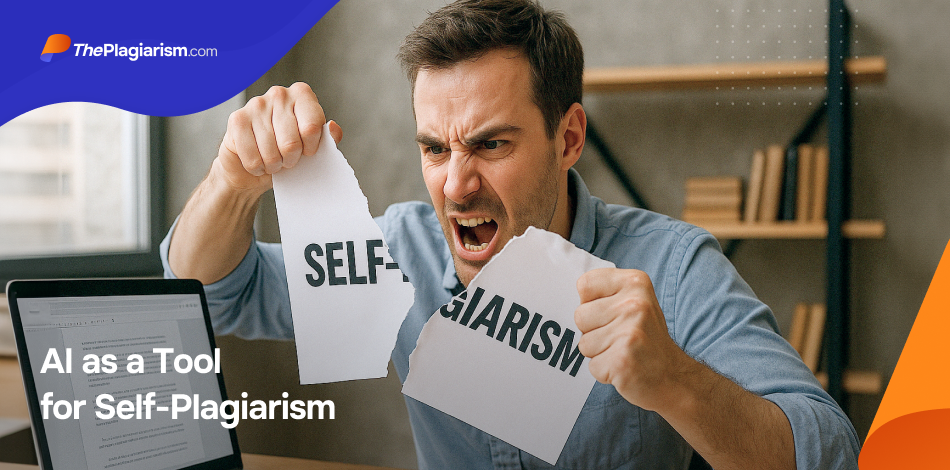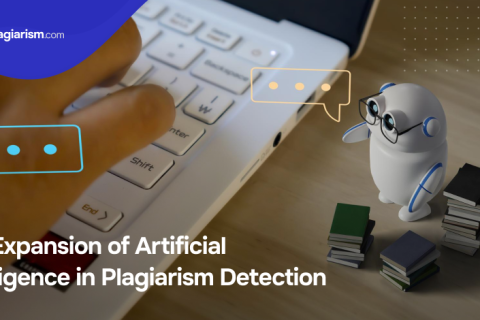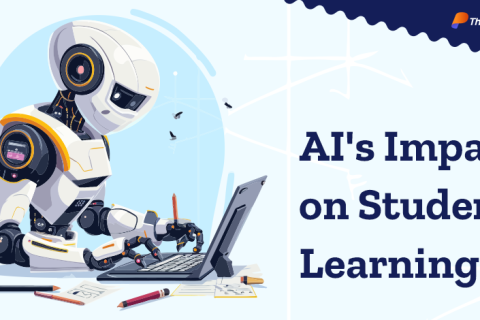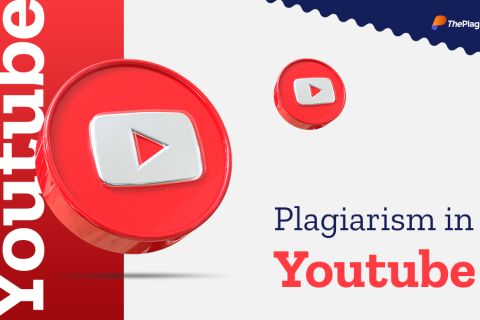How AI Can Be Used to Reproduce One’s Own Work
17 Apr 2025

What is your first association with the term ‘self-plagiarism’ when you hear it? It is excellent if you think about it as a misconduct which means that you have used the text you have written more than once just to save your time and effort, hoping to deceive others. However, in some cases, students or indecent writers think about self-plagiarism as their fair right to own an intellectual property and use it in the way that seems appropriate for them. It is not a fair game at all, and any reuse should be either properly authorized or entirely banned. In the era of AI, all expectations concerning repeating content and plagiarizing are under gradual transformation, and the concept of self-plagiarism is now different as well as our interpretation of originality, authenticity, and authorship as such. What will actually happen if you use your previous article, for example, and do not ensure that it is properly cited? What are the legal, ethical, and practical consequences of misunderstandings in terms of originality and self-plagiarism in the times of AI? Let’s try to figure all this out.
Self-Plagiarism as a Component of Plagiarism
With the prevalence of AI, the complexity of plagiarism as an issue is gradually growing. This problem also covers self-plagiarism that implies recycling your own work without appropriate attribution if it has already been submitted to school or published. With AI it is easy now to mix the previous content or rephrase it in no time, but without reference to the past paper, you get into a trap of fraud. If you have not refreshed the previous ideas, they become plagiarized. Even if ThePlagiarism.com or some other trustworthy software does not trace direct copying, creating a false impression that the paper is used for the first time as original research is a breach of trust and the principle of integrity.
What is the purpose of an authentic writing work? - For sure, it is presenting fresh ideas and offering new insights to the readers.
What happens when you use AI to paraphrase, summarize, or reuse the materials you have already used? – You just present the same ideas and insights repackaged and recombined.
In academic writing, self-plagiarism is
- using parts of previous work in new research
- using previous findings in new studies without proper referencing
Only if you submit authentic work, you demonstrate that you display your honesty, uphold the trust of others, and meet their expectations to see your genuine effort.
Self-Plagiarism: What Does It Lead To?
It is absolutely wrong if self-plagiarism is disregarded as a problem. The severity of this act of dishonesty determines the scope of potential consequences, i.e.
- failing grades;
- academic probation period;
- suspension;
- disciplinary actions;
- loss of reputation;
- cancellation of scholarships;
- low chances for first-rate future training, professional, and academic opportunities, etc.
Establishing professional relations is possible only on the basis of trust and acting on the basis of integrity. Without all that, no credibility can be built.
Self-Plagiarism: How to Avoid
Even with the use of AI for rephrasing the materials you have already used, follow these advice to avoid accusations of self-plagiarism:
- First and foremost, cite not only the used sources, but also yourself!
- Check on the credibility of the sources you have used in your previous works if you refer to them again. Some of the details, such as statistics, may be outdated and they require immediate review.
- Add more details to make your paper fresher, stronger, and more informative.
- Modernize the content to meet the new expectations.
- Ask AI tools for suggestions to be able to look at the topic from a new angle and consider the aspects missed before.
Text Recycling as Self-Plagiarism in Science
As Takeda mentions in the article this study on text recycling and AI-induced plagiarism, preparing a research manuscript implies conducting a series of experiments and presenting the section of Materials and Methods. It can be done in the following way:
- using a direct citation from the original material, introducing it with a phrase ‘as presented previously’;
- modifying the ideas from the previous work and using recycled sentences;
- paraphrasing the original sentences either manually or with the help of AI tools to avoid direct plagiarism detection, but to reproduce the same ideas and sentences precisely, presenting them in a different manner.
All in all, recycling the same ideas from previous research and publications disregards the principles of technological advancement, novelty, and giving insights into the following stages of research.
The guidelines for researchers say:
- Text recycling in research is appropriate if precise communication depends on the consistency of language, for instance in the sections on instrumentation, methods, etc.
- Text recycling is allowed if the appropriateness and accuracy of the recycled material are confirmed and there is no violation of the policies or infringement of the copyright.
- No misleading of the editors or readers is allowed in terms of research novelty.
It is not absolutely correct to believe that stealing the work of others is equal to self-plagiarism in terms of violations and fraudulent activities, but the punishment for plagiarizing your own research can be severe. In some cases, text recycling is viewed as a legal matter with corresponding consequences, in other ones – it is an ethical one. Deliberate deceit should not be tolerated as it is one of the ways of cheating without producing any original content. More than that, it implies tricking the audience and conscious fraud that breaks the principles of integrity. A new version of the material does not have the value of an authentic piece of writing and there are specific risks and wrongs that should be taken into account.
Thus, is AI rephrasing and text recycling a burning problem? It is a serious issue that should not be simply forgotten and forgiven, that is for sure. Moreover, it does require specific measures to be taken to terminate the problem of self-plagiarism as such.






